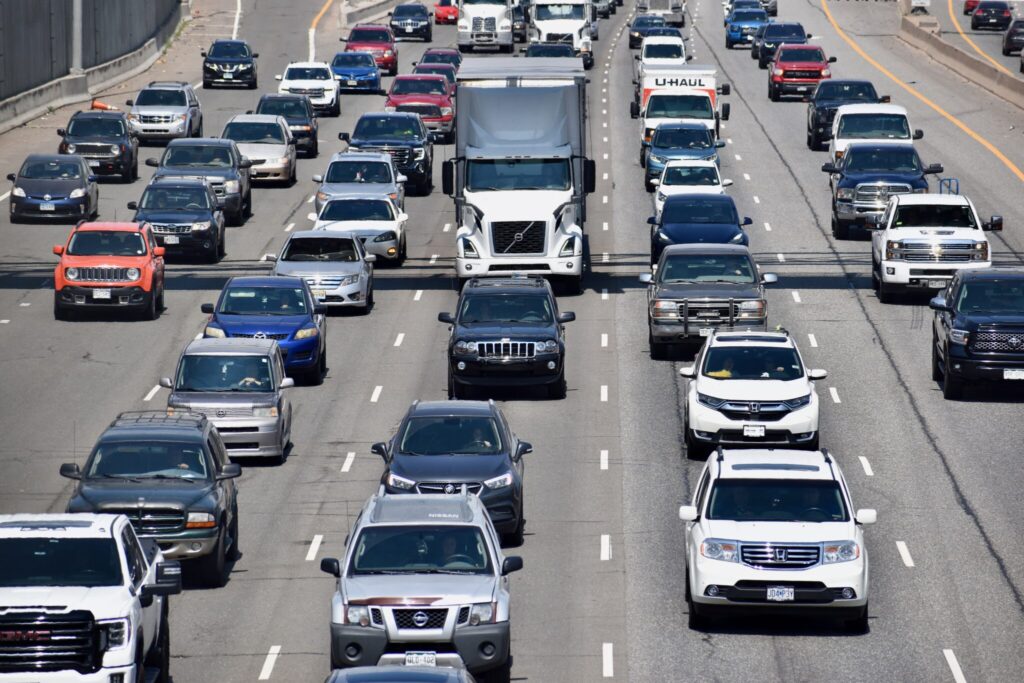Like our airports, the Interstate Highways which crisscross this country are a separate, dystopian world within the United States – places with their own cultures, norms, rules, and inhabitants. If you’ve driven across Iowa on Interstate 80, you haven’t visited Iowa. You’ve just been racing along a stretch of this dystopian world overlayed on Iowa’s landscape.
The Interstate Highway System was begun in the 1950s during the Eisenhower administration with one goal: To get vehicles from one place to another as fast as possible. There was a large national security component to the original thinking behind this highway system (this was, after all, the height of the Cold War) but the practical outcome was a system of limited-access highways for moving commerce and people in trucks and cars as rapidly as possible around the country.
We are constant users of the Interstates, and we’re residents of that world just as much as we’re residents of the United States. While we prefer to travel the country on its two-lane state and county highways – the better to feel and understand the country – often, as a result of time pressures or a lack of an acceptable alternative route, we rely on the Interstates to get us quickly from one engagement to the next. But this often puts us into conflict with drivers who are on the Interstates with no clue about their responsibilities and obligations to the others who are on the highway with them.
There needs to be federal government intervention. The behavior of drivers on the Interstates needs to be regulated separately from the traffic rules of the individual states. When drivers enter an Interstate Highway, they need to know that they have left Iowa and that new rules apply. What currently goes on in the right lanes – the slow lanes – of the Interstates is, for the most part, acceptable. The problems that need solving are in the left lanes – the fast lanes. Drivers who have forgotten (or never knew) the rationale for the creation of the Interstate Highway System – to move vehicles around the country as fast as possible – are in greater numbers wandering into the Interstates’ left lanes, driving slowly, refusing to move out of the way of faster vehicles, and creating havoc.
There needs to be a nationwide system for issuing specialist licenses to drivers before those drivers are allowed in the fast lanes on the Interstates. To obtain a fast lane license, one would need to pass a written test and a driving test conducted at at least 85 miles per hour. Drivers would have to demonstrate that they understand the culture of the Interstates and the fast lanes, and that they are capable of driving in those lanes without gumming up the whole highway. You have to have a special license to drive a motorcycle or a big-rig truck onto the highway. You should have to have a special license to drive your car in the fast lane.
On the Interstates, there are herds (bad) and pelotons (good). There are independents (good and bad) as well as breakaways (good within reason) and tagalongs (mostly a nuisance). A driver in the fast lane needs to know which kind of driver he/she is, what is expected of him/her, and how to respect the other characters on the road. Those drivers have to realize that posted speed limits are relics of the pre-pandemic era, that traffic stops by law enforcement are way down from pre-pandemic numbers, and that the default Interstate speed limit throughout the country is now 80 miles per hour. And not just in rural areas, but on urban freeways from San Diego to Atlanta as well. You have no business claiming the right to be in the left lane when all you’re willing to do is drive the posted speed limit. Remember the stated purpose of the Interstate Highway System? To get vehicles from one place to the next as fast as possible.
We need to get the clowns out of the fast lane so that those of us who understand the culture and norms of the Interstates can fulfill the original goal of the system.


